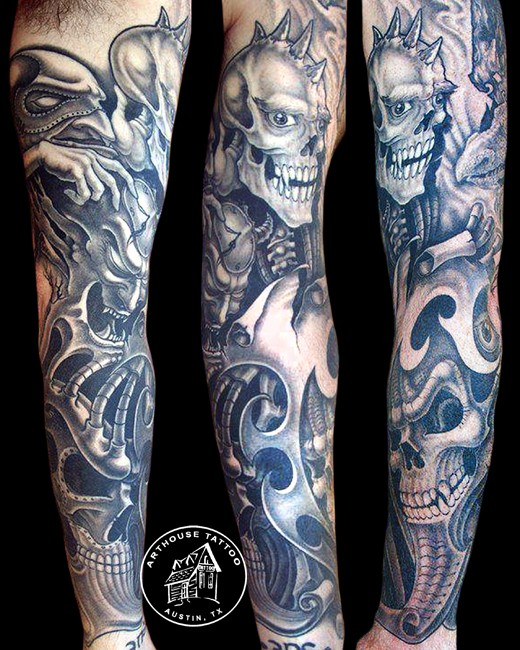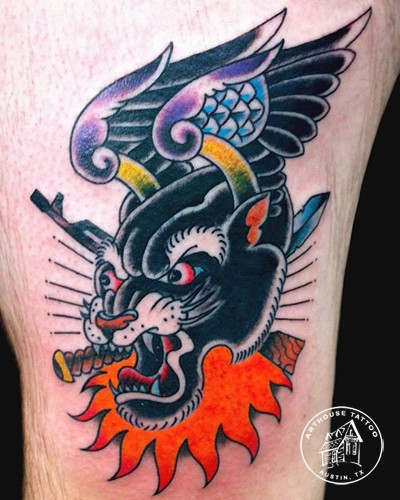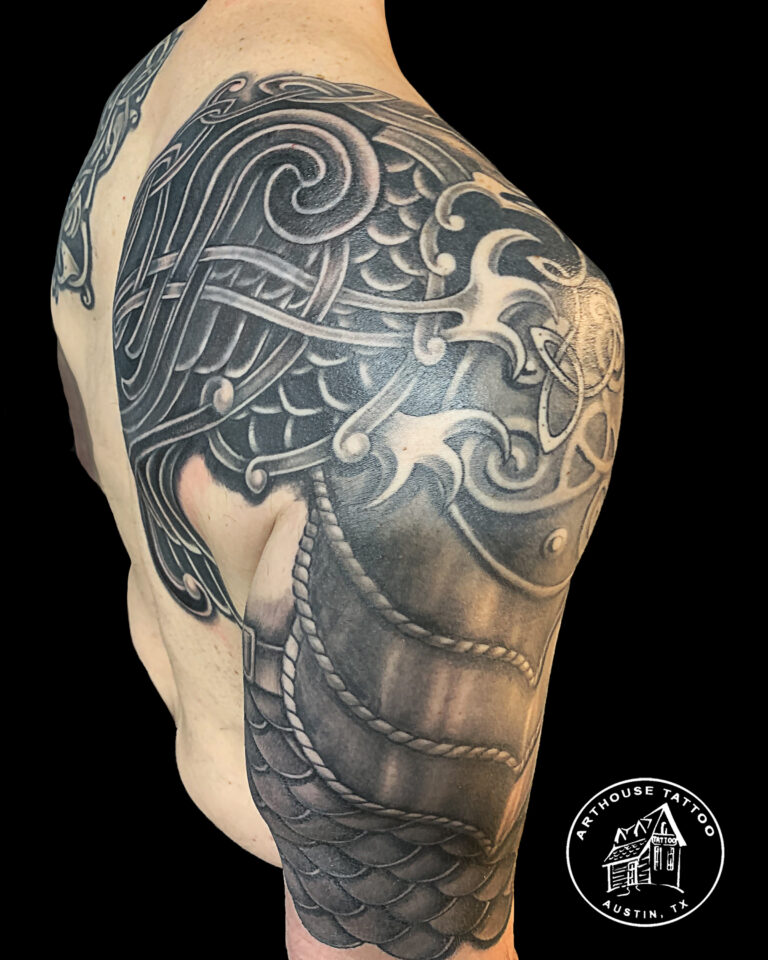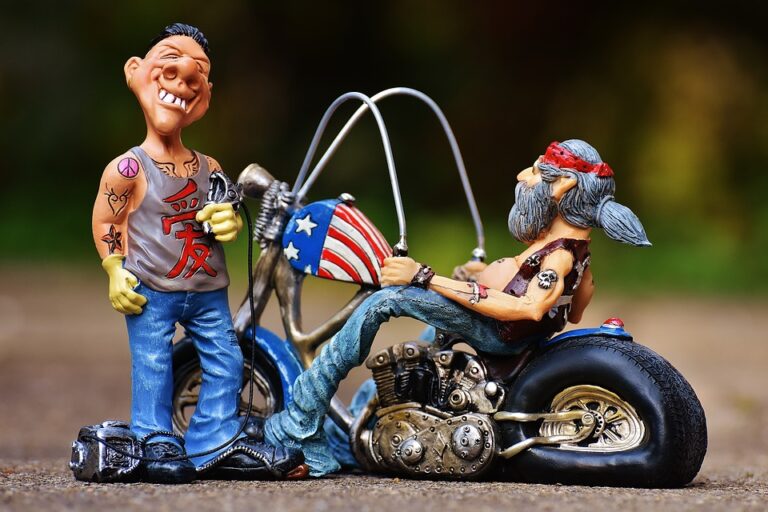What Is A Biomechanical Tattoo?
Biomechanical tattoos stand out in the realm of body art. They blend the organic with the mechanical, creating a unique aesthetic.

These tattoos draw inspiration from sci-fi and the works of artists like H.R. Giger. They offer a glimpse into a world where biology and technology intertwine.
In this guide, we look into the definition of a biomechanical tattoo based, its origins, and why it might be the perfect choice for your next piece of body art.
The Essence of Biomechanical Tattoos
Biomechanical tattoos are a fusion of elements. They combine the mechanical and the organic in a seamless blend.
The designs often depict machinery parts, gears, and pipes. These elements intertwine with flesh, veins, and bones, creating a surreal visual effect.
The result is a tattoo that looks like a peek under the skin. It reveals a mechanical structure beneath, as if the wearer is part of a machine.
This style of tattooing is known for its depth and detail. It often creates an illusion of three-dimensionality on the skin.
Biomechanical tattoos are a testament to the skill and creativity of the tattoo artist.
Origins and Influences
Biomechanical tattoos have a rich history. They emerged in the late 20th century, influenced by science fiction and cyberpunk culture.
The style was further popularized by the movie industry. Films like “Alien” and “Terminator” showcased the fusion of organic and mechanical elements.
This fusion resonated with tattoo enthusiasts. It offered a unique way to express their individuality through body art.
The style continues to evolve today, influenced by technological advancements and tattooing techniques.
H.R. Giger and the Biomechanical Vision
A key figure in the development of biomechanical tattoos was H.R. Giger. He was a Swiss artist known for his surreal, biomechanical artwork.
Giger’s work, particularly his design for the creature in “Alien,” profoundly impacted the tattoo industry. His style became a source of inspiration for many tattoo artists.
Today, Giger’s influence can still be seen in many biomechanical tattoos. His legacy continues to shape this unique form of body art.
Key Characteristics of Biomechanical Tattoos
Biomechanical tattoos are known for their unique style. They seamlessly combine elements of machinery and organic forms.
The designs often depict mechanical parts like gears, pistons, and wires. These elements are intertwined with organic forms such as bones, muscles, and veins.
The result is a tattoo that looks like a glimpse beneath the skin, revealing a mechanical structure.
Mechanical and Organic Fusion
Fusing mechanical and organic elements is a key characteristic of biomechanical tattoos. This blend creates a surreal, otherworldly aesthetic.
The mechanical elements often appear as if they are part of the wearer’s body, creating a sense of unity between the tattoo and the person.
Color vs. Black and Grey
Biomechanical tattoos can be done in color or black and grey. The choice often depends on the wearer’s preference and the artist’s style.
Color can add a vibrant, dynamic element to the design. Black and grey, on the other hand, can create a more realistic, gritty look.
Illusion of Depth and Movement
Another critical characteristic of biomechanical tattoos is the illusion of depth and movement. This is achieved through careful shading and perspective.
The tattoo appears to have a three-dimensional quality. It seems as if the mechanical parts are moving beneath the skin, adding a dynamic, lifelike element to the design.
Choosing the Right Artist and Design
Choosing the right artist for a biomechanical tattoo is crucial. This style requires a high level of skill and creativity.
The artist must be able to seamlessly blend mechanical and organic elements and create the illusion of depth and movement.
Personalization and Creativity
Biomechanical tattoos offer a lot of room for personalization and creativity. Each design can be tailored to the wearer’s preferences.
The choice of mechanical elements, organic forms, and color schemes can all be customized. This makes each biomechanical tattoo a unique piece of body art.
Placement and Pain Considerations
The placement of a biomechanical tattoo can greatly affect its visual impact. Larger designs often work best on the back, chest, or arms.
Pain is also a consideration. Areas with less fat or muscle, like the ribs or ankles, may be more sensitive to the tattooing process.
Aftercare and Longevity
Proper aftercare is crucial for the longevity of a biomechanical tattoo. This includes keeping the area clean and moisturized.
Over time, touch-ups may be needed to maintain the tattoo’s intricate details and vibrant colors.






